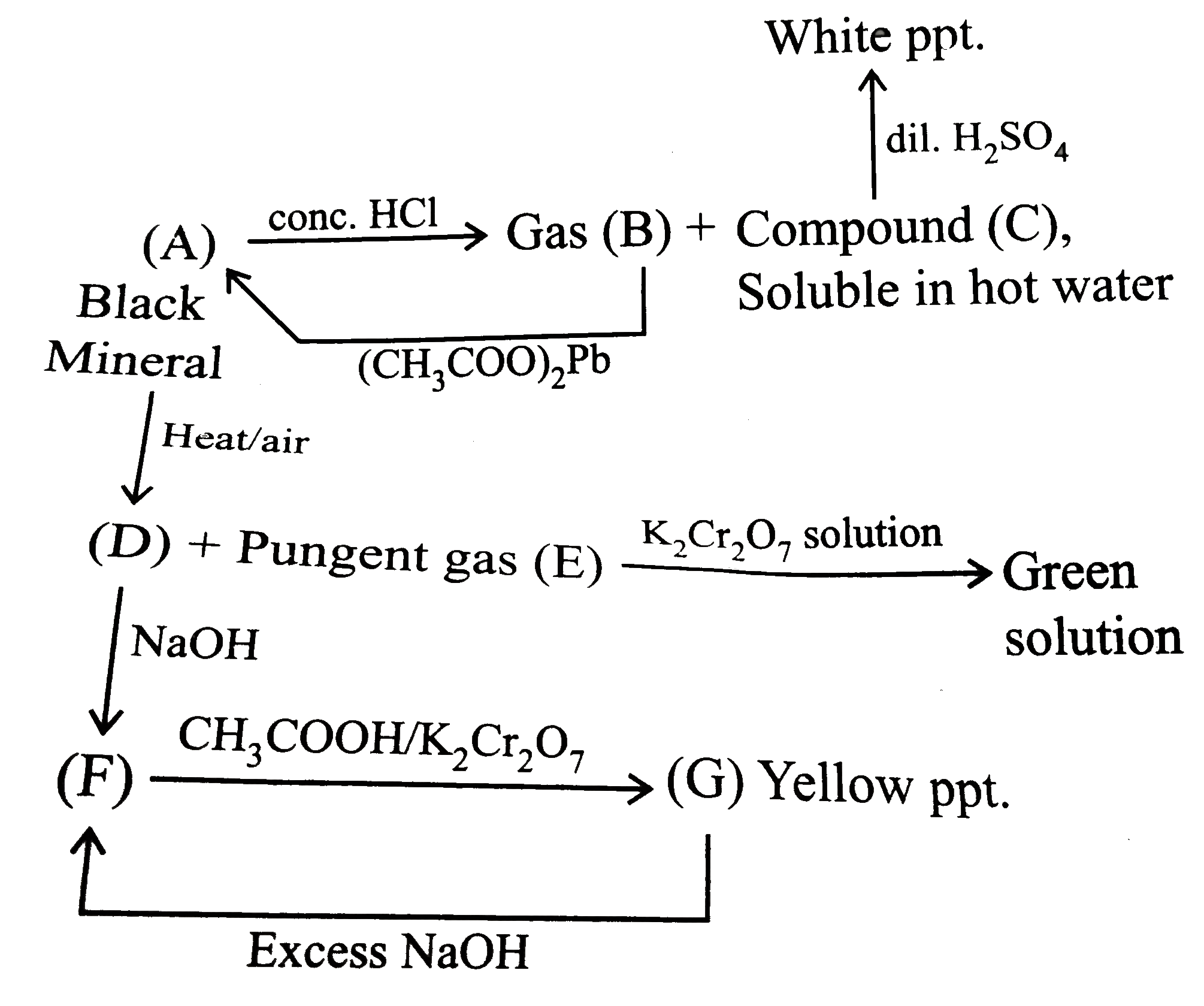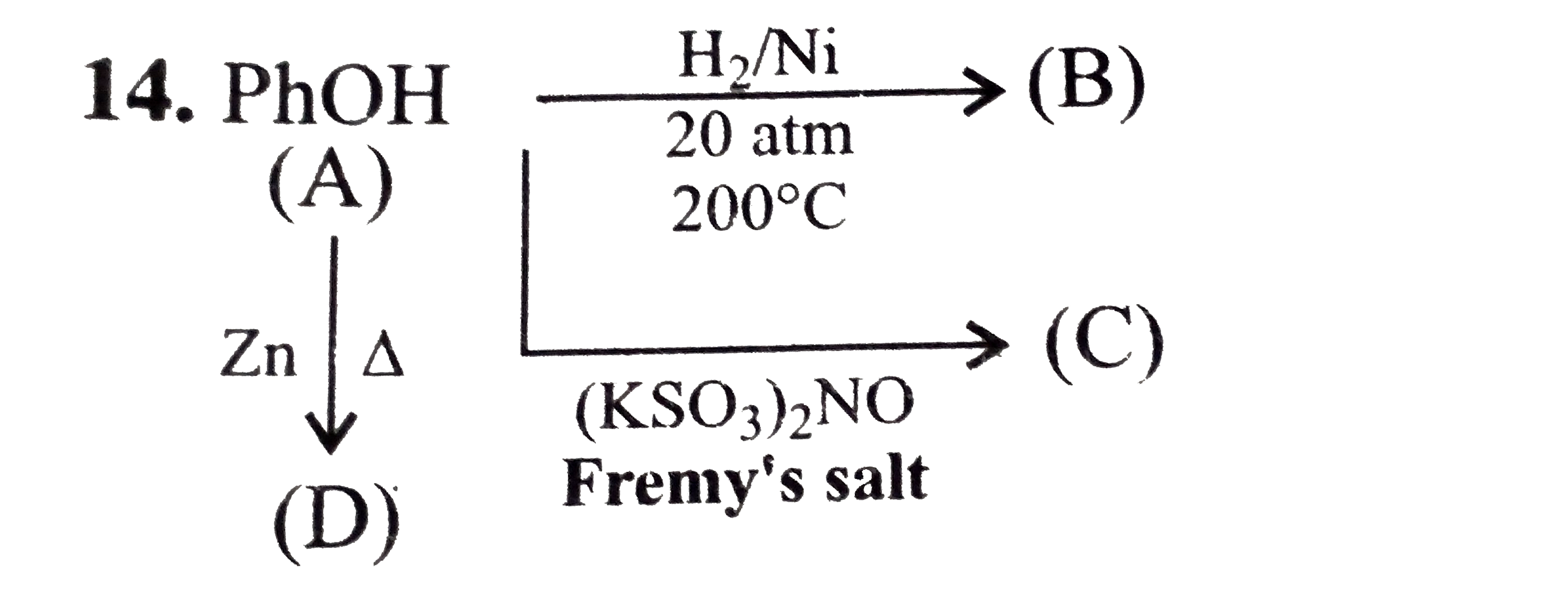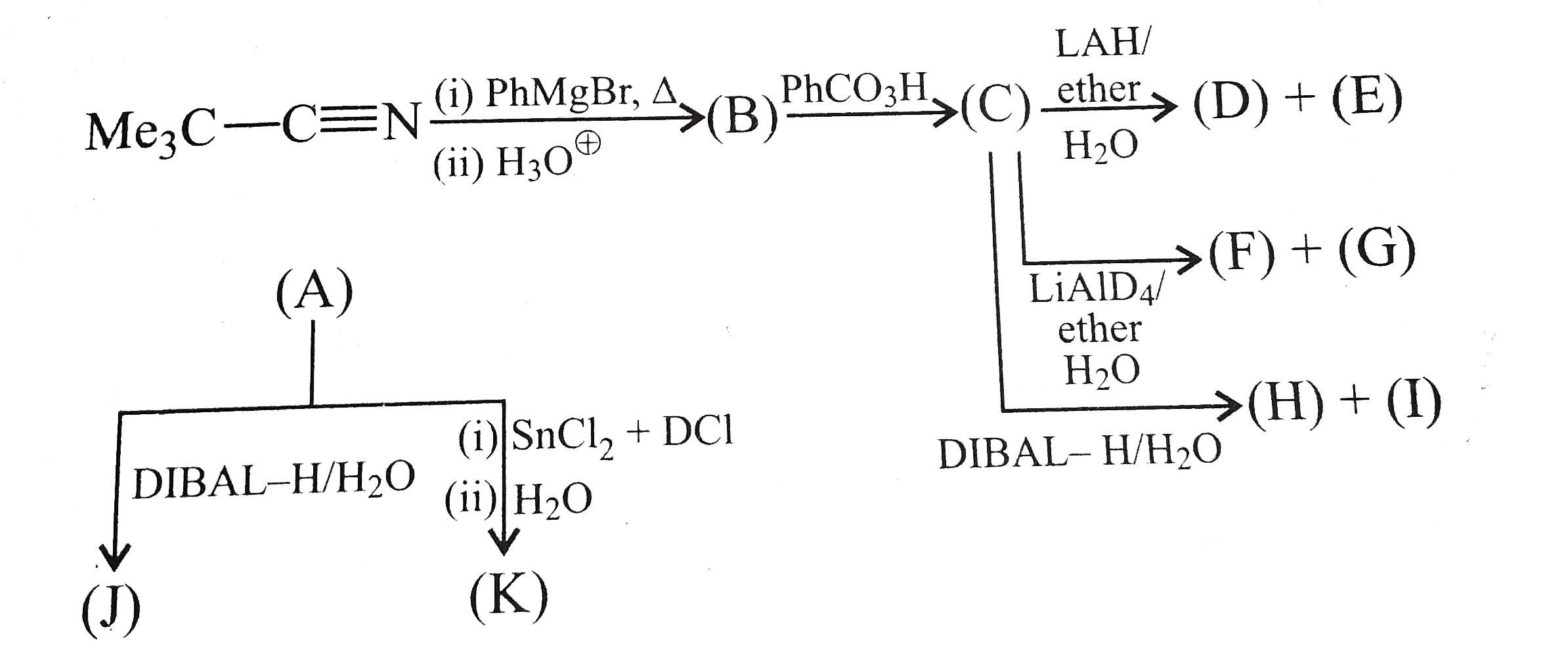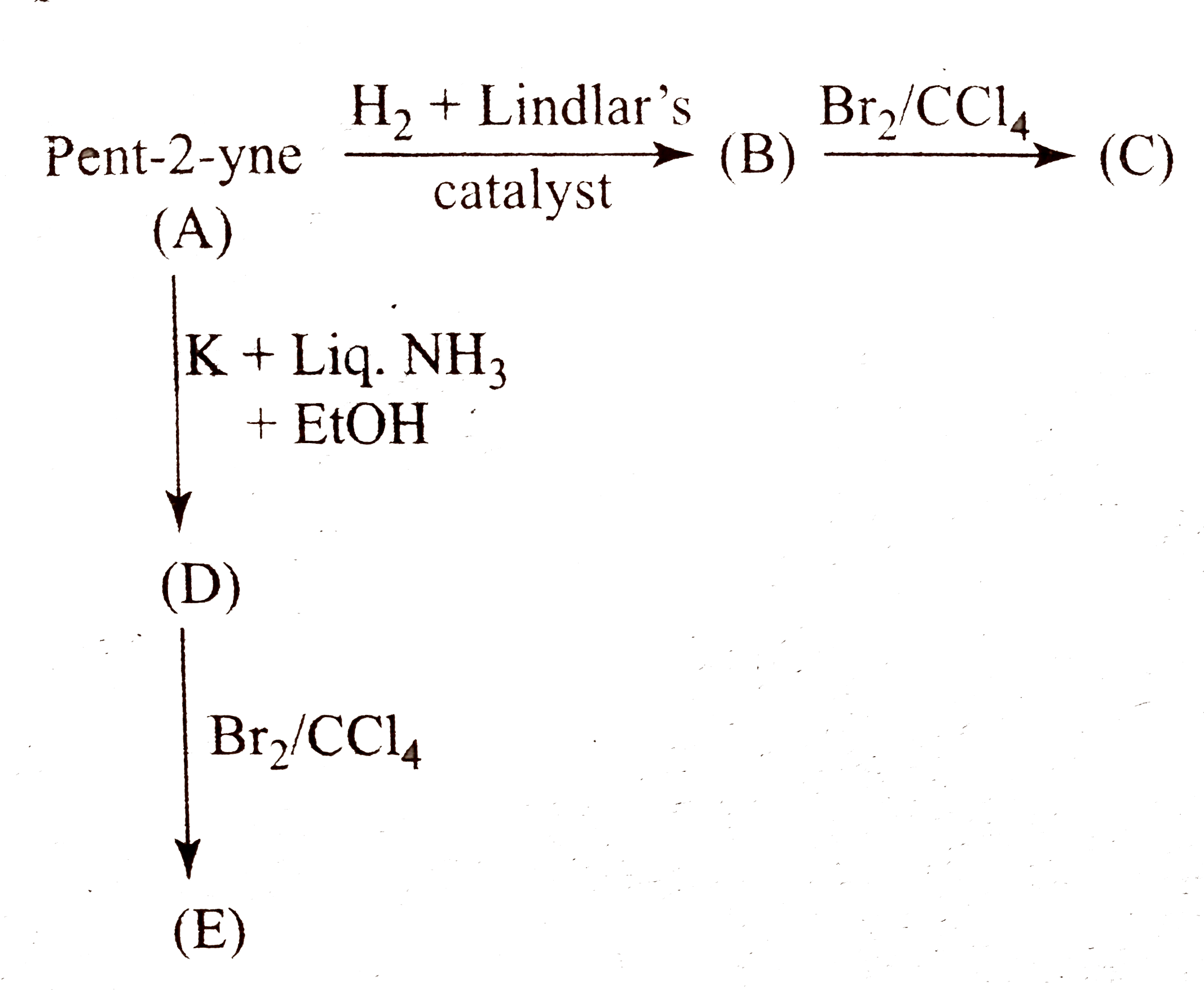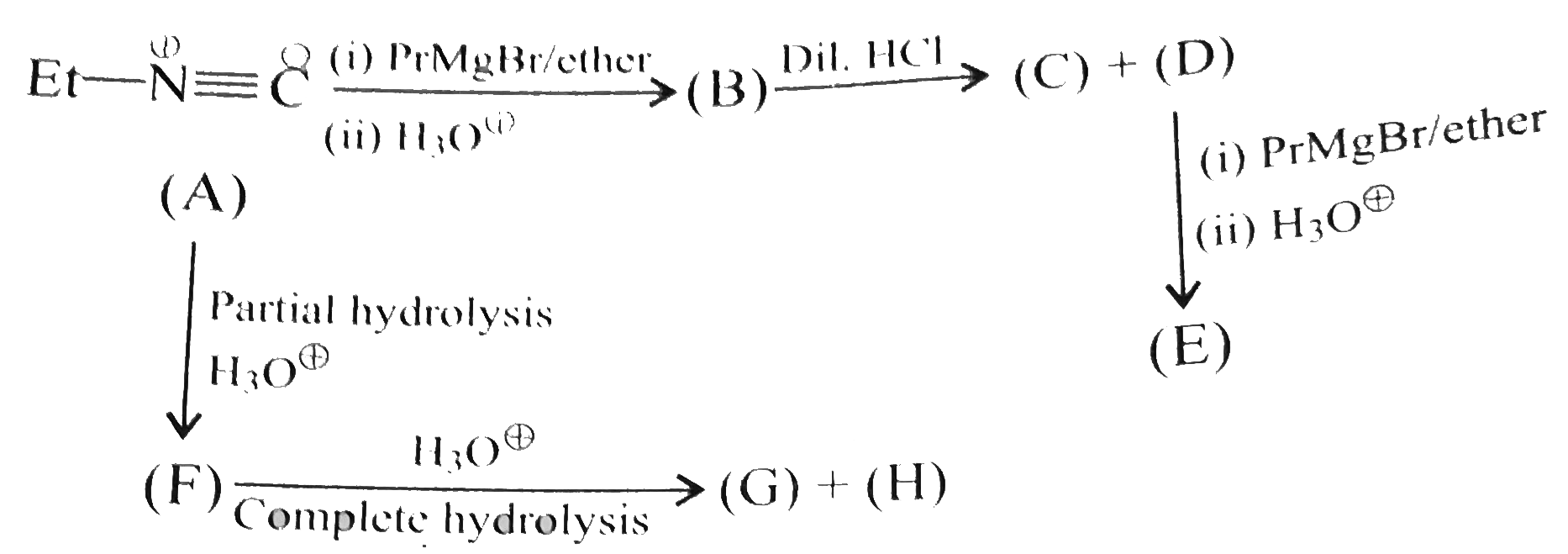
The compounds (C) and (D), respectively, are :
A
EtNH2 and PrCH=O
B
Et−NH−Pr and HCOOH
C
PrNH2 and EtCH=O
D
EtNH2 and PrCH2OH.
Video Solution
Text Solution
The correct Answer is:A
(a) In an isocyanide, first an electrophile and then a nucleophile is added at the same C atom of (−⊕N≡ӨC) group to form a species which usually undergoes further transformations.
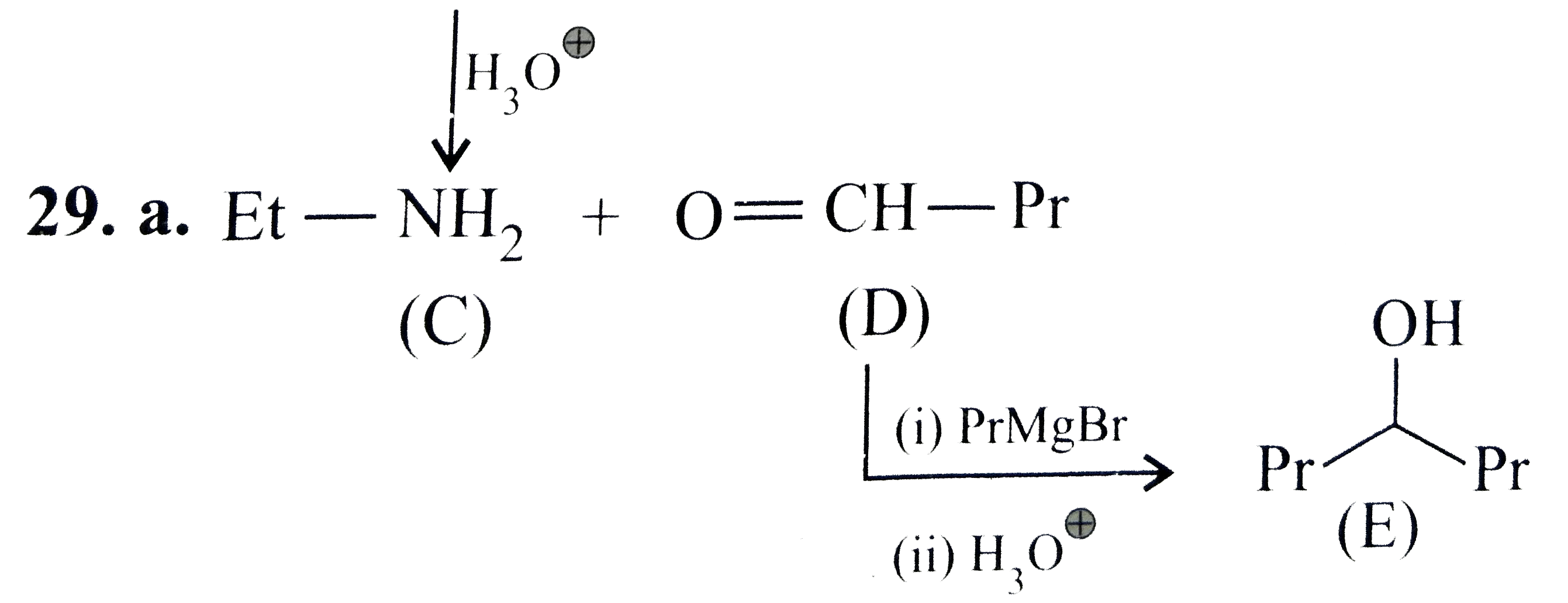 .
.
|
Topper's Solved these Questions
- GRIGNARD REAGENTS AND ORGANOMETALLIC REAGENTSBOOK - CENGAGE CHEMISTRYCHAPTER - GRIGNARD REAGENTS AND ORGANOMETALLIC REAGENTSEXERCISE - Exercises (Multiple Correct)
16 Videos
- GRIGNARD REAGENTS AND ORGANOMETALLIC REAGENTSBOOK - CENGAGE CHEMISTRYCHAPTER - GRIGNARD REAGENTS AND ORGANOMETALLIC REAGENTSEXERCISE - Exercises (Single Correct)
47 Videos
- GRIGNARD REAGENTS AND ORGANOMETALLIC REAGENTSBOOK - CENGAGE CHEMISTRYCHAPTER - GRIGNARD REAGENTS AND ORGANOMETALLIC REAGENTSEXERCISE - Exercises (Subjective )
17 Videos
- GENERAL PRINCIPLES AND PROCESS OF ISOLATION OF ELEMENTSBOOK - CENGAGE CHEMISTRYCHAPTER - GENERAL PRINCIPLES AND PROCESS OF ISOLATION OF ELEMENTSEXERCISE - Archives (Subjective)
14 Videos
- NCERT BASED EXERCISEBOOK - CENGAGE CHEMISTRYCHAPTER - NCERT BASED EXERCISEEXERCISE - Nuclear Chemistry (NCERT Exercise)
29 Videos
Similar Questions
Knowledge Check

(C) and (D) are respectivelyAMn(BO2)2,MNO2BAgNO2,Ag2OCCu(BO2)2,CuODnone of these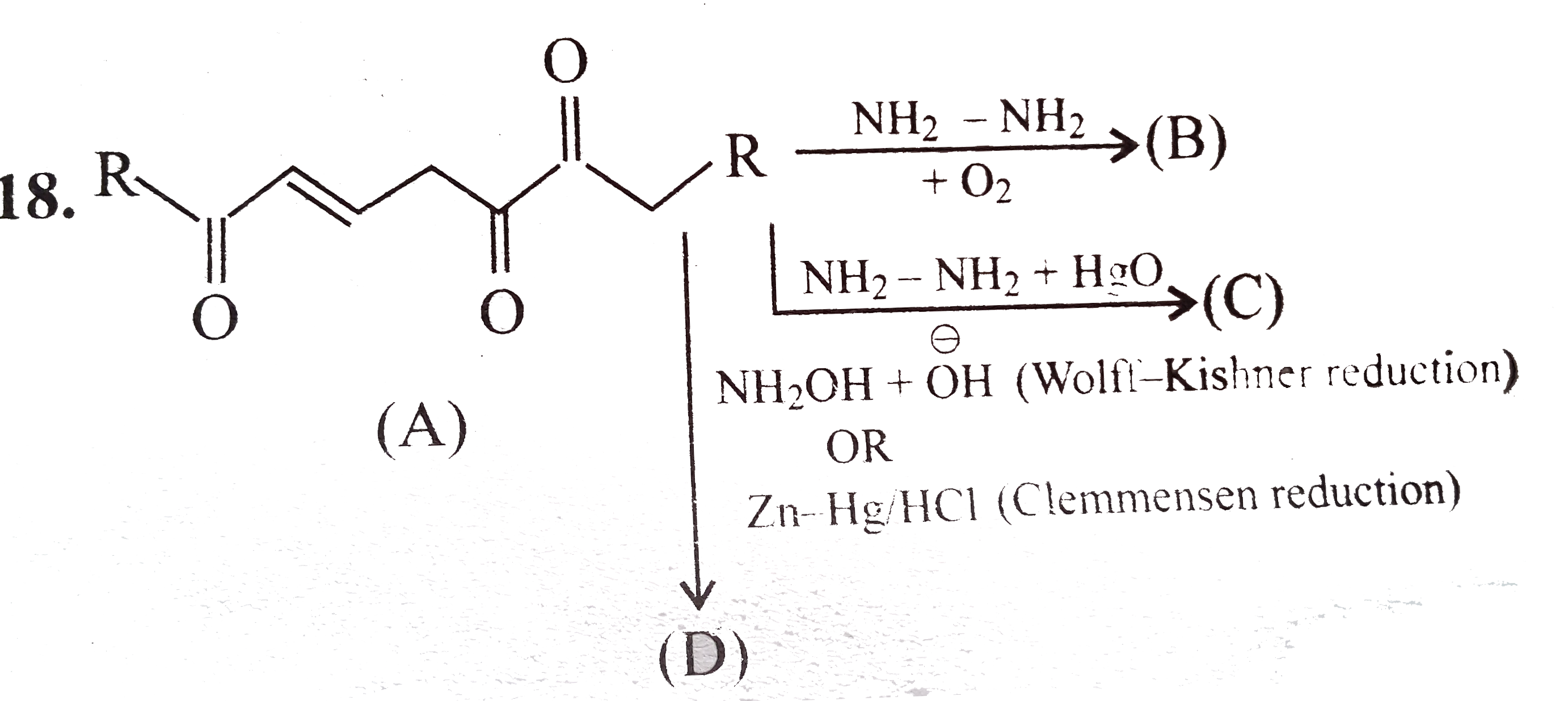
(B), (C), and (D), respectively, areA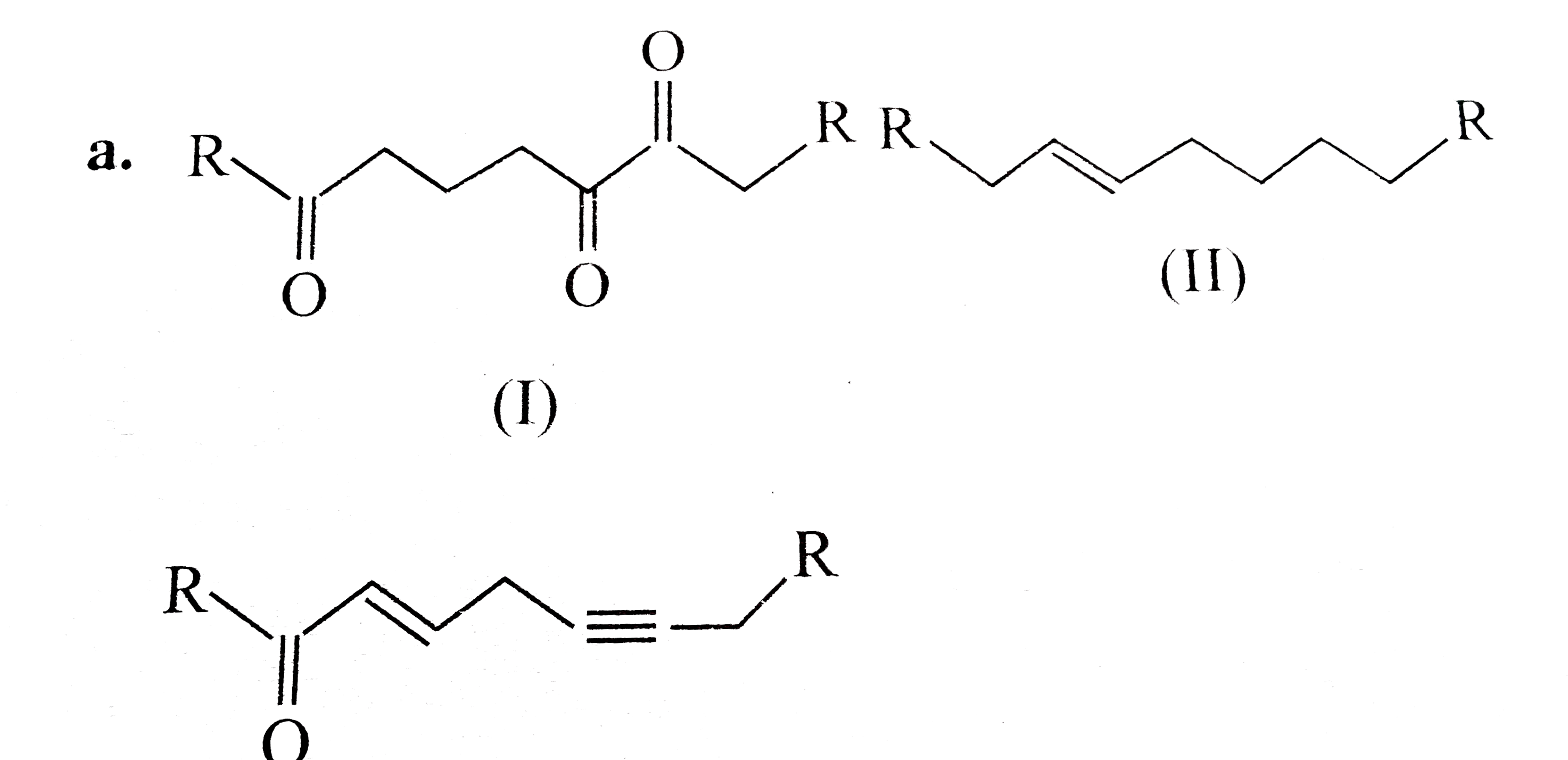 B(b) (I), (III), (II)C(c) (III), (II), (I)D(d) (III), (I), (II)
B(b) (I), (III), (II)C(c) (III), (II), (I)D(d) (III), (I), (II)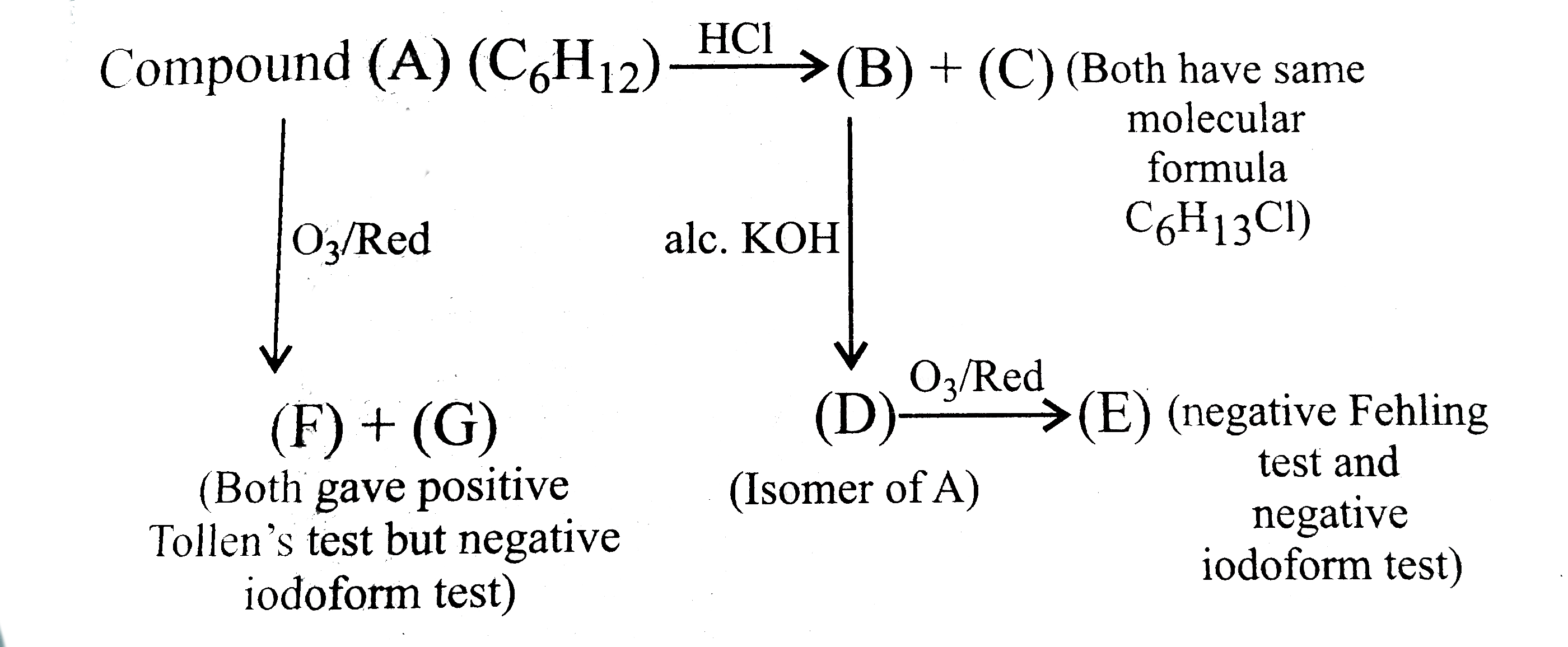
The compounds (B) and (C ), respectively, are:Aa. Bb.
Bb. Cc.
Cc. Dd.
Dd.



